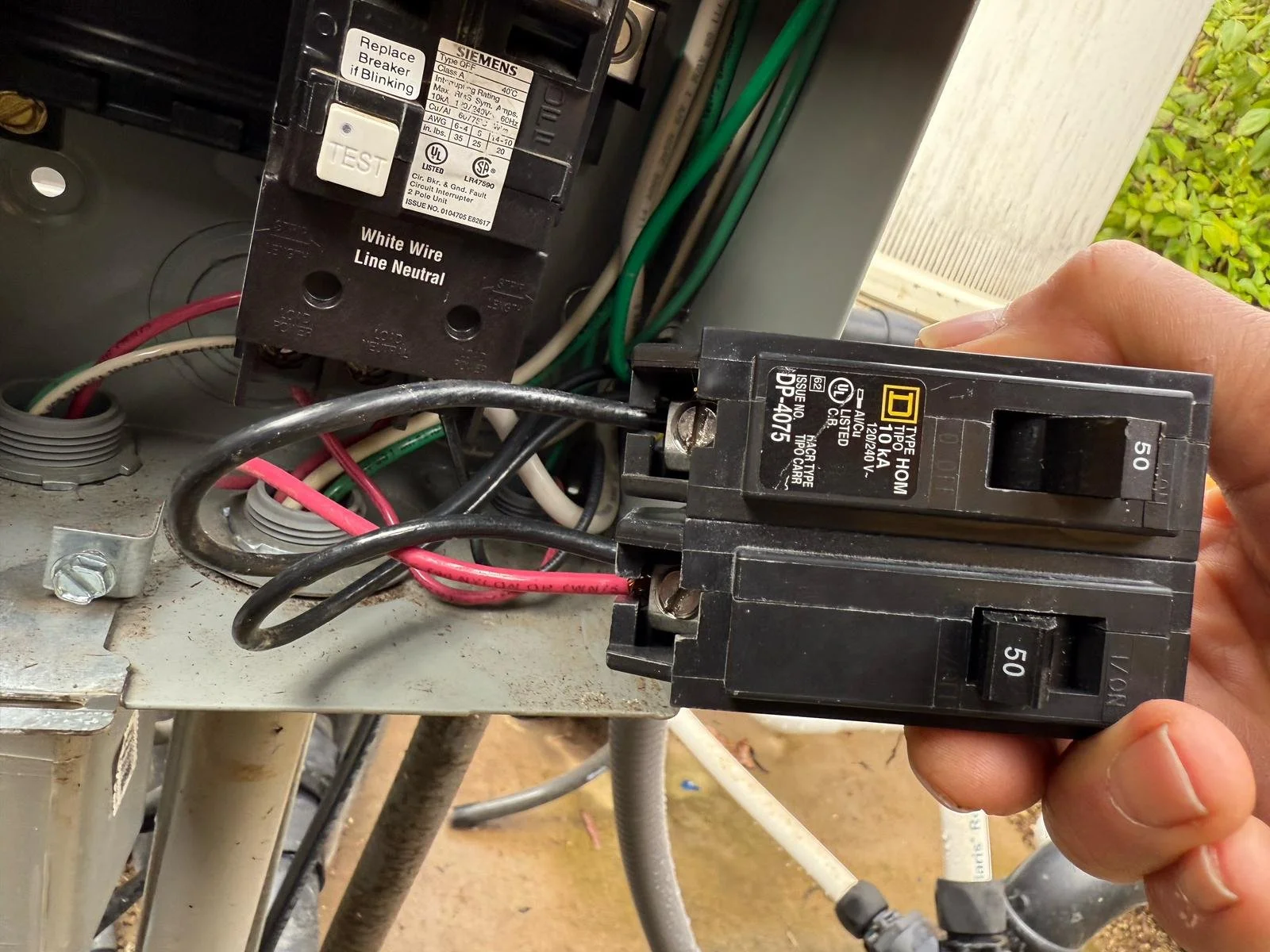The Hidden Danger of Double-Tapping a Breaker – Why It’s a Big Problem
When it comes to electrical work, small mistakes can lead to big risks. One common issue we encounter is double-tapping a breaker—a dangerous and improper wiring practice. Recently, I came across a panel where a non-professional, unqualified individual had double-tapped a 50-amp breaker with a 20-amp breaker. While it may have seemed like a quick fix, this mistake created a serious safety hazard.
What Is Double-Tapping a Breaker?
Double-tapping occurs when two wires are connected to a single breaker terminal. While some breakers are designed for this, most are not. In this case, the 50-amp breaker was not rated for two wires, making the electrical panel unsafe.
Why Is This Dangerous?
Although it might seem like a minor issue, double-tapping a breaker can lead to major problems, including:
Overheating and Fire Risks – A breaker is designed to handle a specific electrical load. Adding an extra connection can overload the breaker, causing it to overheat and potentially start a fire.
Loose Connections and Arcing – When two wires are forced into a terminal not designed for them, they often aren’t secured properly. This can lead to arcing (electrical sparks), flickering lights, or even damaged appliances.
Breaker Malfunction – An improperly wired breaker may trip constantly, causing inconvenience, or worse, it may fail to trip when it should, allowing dangerous electrical faults to go unchecked.
How We Fixed the Issue
To ensure safety and compliance, we removed the double-tapped connection and installed a proper breaker to separate the circuits. Now, the system is code-compliant, safe, and functioning as intended.


